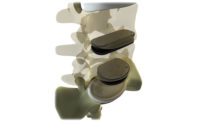In early September, when Thomas Publishing Co. relaunched ThomasNet.com, it included, for the first time, a part search capability. This new tool uses state-of-the-art semantic technology to make parametric search more efficient.
ThomasNet has evolved from a print directory into an online supplier-discovery platform. Company listings include detailed product information, such as individual part specifications and 2-D and 3-D CAD (computer-aided design) drawings. While users could find specific component parts previously, the new Product Search tool has been built from the ground up to make it incrementally easier for users to find these products.
With supplier search, still a major aspect of ThomasNet, users can evaluate and compare suppliers of various types of products, such as gaskets or adhesives, and drill down to find an individual part.
Product Search not only enables users to find products based on multiple simultaneous specifications (parametric search), it also uses cutting-edge semantic technology—known as intelligent search—to make the search process faster.
“We have taken a big leap forward with Product Search,” said ThomasNet.com VP Tom Greco. “We've aggregated over 100 million parts from over 30,000 suppliers. We used our staff of engineers to create a classification taxonomy that defines the attributes that are important to engineers and procurement professionals with each product. Then, with semantic search, we add the layer of being able to understand the user's intent and the contextual meaning. It's not simply word matching.”
From a user's perspective, semantic search eliminates steps by showing how a search was interpreted in the search results by boxes identified as “Refinements Added to Your Results.” If, for example, the search engine interpreted a query for a motor as one for a direct-current motor, that is indicated. If there is an ambiguous term that could be interpreted in more than one way, the engine will ask users to choose the parameter they meant. Users can add parameters until they reach a string of specifications that yields the exact part they need.
